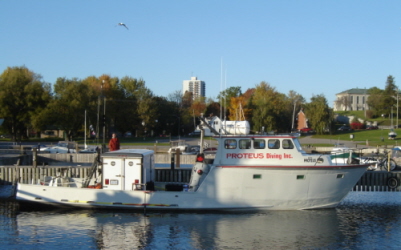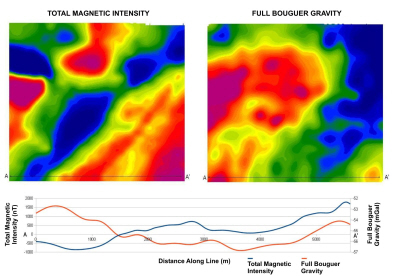
Marine AIRGrav
Sander Geophysics Limited (SGL) offers marine gravity
surveys using SGL's Airborne Inertially Referenced
Gravimeter (AIRGrav), adapted for marine use -
called Marine AIRGrav. AIRGrav was
designed and built by SGL for airborne surveys but can be
used in any moving platform. Its ability to operate in
the challenging airborne environment makes it ideally
suited for marine application, where it can be used in
conjunction with a marine seismic survey or as a
standalone gravity survey. AIRGrav is
over-engineered for marine surveys, where vibration and
vessel acceleration is much lower than in an aircraft,
resulting in better gravity data than can be obtained
using traditional marine gravimeters.

AIRGrav is the only purpose-built airborne
gravimeter, designed specifically for the unique
characteristics of the airborne environment and was easily
adapted for use on a marine platform. This design
approach has resulted in a superior gravity instrument
which can be used twenty-four hours a day, even in
challenging sea conditions. In addition, Marine
AIRGrav can easily be used in combination with
magnetic and/or sonar instruments to increase the survey
benefits. Marine AIRGrav is an alternative to an
airborne gravity survey in areas where an aircraft cannot
fly (very far from land or in restricted flight areas) or
for acquiring very high resolution data.
Along with marine gravity data, Sander Geophysics can
also acquire magnetic data with a towed magnetometer
sensor, and measure bathymetry and shallow seabed
structure with a side-scan sonar, or sub-bottom profiler.
Marine AIRGrav can be also be used alongside a
marine seismic system. Because of the low vessel speed of
marine surveys, very high resolution gravimetric, magnetic
and bathymetric data can be acquired.
The Marine AIRGrav system includes a gravimeter
on a three-axis inertially stabilized platform, combined
with high resolution differential GPS to correct for
vessel accelerations due to waves, changes in speed,
turns, tides and currents. The gyro stabilized inertial
platform makes the gravimeter much less affected by
horizontal accelerations than other systems.
Bathymetric and terrain corrections are performed using
either existing digital bathymetry and terrain models or
data acquired during the gravimetric survey. Digital
bathymetric models can be supplemented with remote sensing
data, depending on the nature of the sea floor and the
resolution of the survey. A sonar sensor can gather high
quality bathymetric data concurrently with the gravimetric
survey.

To demonstrate the capability of Marine AIRGrav,
Sander Geophysics performed a marine gravity survey on
Lake Ontario in October, 2009. The map above shows the
terrain corrected Bouguer gravity and the total magnetic
intensity, as well as a profile across the area. The data
set consists of 200 m spaced lines along a bearing of
45°/225°, with control lines bearing 135°/315°. The
extent of the data set is 5 km from north to south.
During the test survey the waves were 1-1.5 m and very
choppy, with a 10-20 kt (18.5-37.0 km/h) wind. Sailing
speed was 8 kt (14.8 km/h). Accuracy was calculated to be
0.12 mGal with a 300 m resolution.
Marine AIRGrav Survey System Specifications
| Gravimeter sensitivity and sample rate |
0.1 mGal and 128 Hz |
| Operating range |
-1 to +2 g |
| Accuracy and resolution (speed dependent) |
0.12 mGal and 300 m at 8 kt
(14.8 km/h) |
| System dimensions |
90 cm x 120 cm x 150 cm |
| System weight and power requirements |
130 kg and 900 W |
|